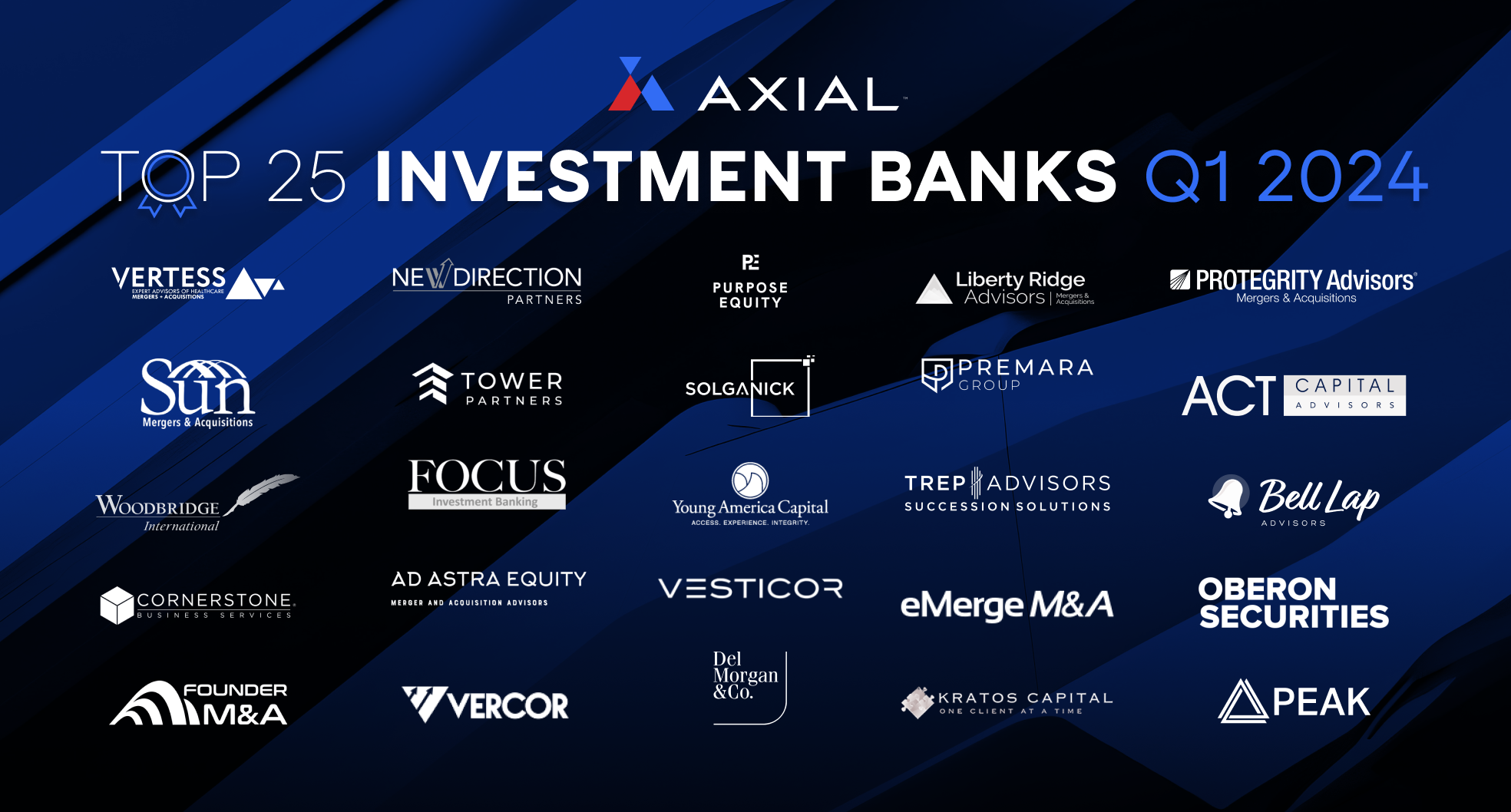
Top 25 Lower Middle Market Investment Banks | Q1 2024
Axial is excited to release our Q1 2024 Lower Middle Market Investment Banking League Tables. To assemble this list, we…
Yesterday, we shared six predictions for M&A in the second half of 2016. Read them here.
Here are seven more insights on activity for the rest of the year.
7) “Every year we get further away from the Great Recession, we’re that much closer to the next downturn.”
“There’s something else to consider when it comes to M&A – the fear of a recession.
“Every year we get further away from the Great Recession means we’re that much closer to the next downturn,” notes Ami Kassar, founder and CEO of Multifunding.
“Historically, we’re overdue for a recession, which might spur businesses to adopt an attitude of getting things done before conditions deteriorate. In a 2016 survey conducted by Citizens Bank, 53 percent of lower mid-market firms said they expected a financial crisis within three years. Factor that into the other mostly favorable conditions, and it points to a good and potentially excellent six months for M&A. Jump in now while you’ve got the chance.”
8) “There remains a disconnect between buyers and sellers regarding value.”
Says Heather La Freniere, EVP and Head of Originations at Gibraltar Business Capital, “There remains a disconnect between buyers and sellers regarding value. This goes for M&A as well as borrowing where the buyer is the borrower and the seller is the finance company.”
“In general, there seems to be lots competition for ‘down the middle’ deals,” Brent Beshore, founder and CEO of adventur.es, observes — i.e., well-managed companies with solid leadership, customer bases, and track records. “Family offices and retired executives have dramatically ramped up involvement, creating increased competition for high-quality assets under the thesis that they’ll require less oversight and fewer rare skill sets. This is how they justify multiples that have been previously rare.”
This trend is likely to continue — as Eric Mattson, Principal at Excellere Partners, noted in a recent article on the valuation gap, “Absent an unexpected market trigger event, we don’t see much of a change in the near term. Also, we don’t expect too much economic drama until post-election.”
9) “We’re seeing a much higher number of foreign buyers.”
Says Robert Flynn, Managing Member of United Brokers Group, LLC, “We continue to observe a much higher number of foreign buyers — Chinese, Nordic, and German — for high quality mid market deals, at a far higher level than five years ago.”
As we noted recently, “cross-border M&A made up 45% of global deal volume during the first five months of 2016, easily surpassing the historical average of 30%.” With volatility in Europe, China, Brazil, and elsewhere, investors are increasingly looking to U.S. opportunities.
10) “Student debt is staggering — and something has to give.”
“I’m concerned with the state of student debt,” says Beshore. “The amount of debt is staggering at $1.6 trillion and growing at an increasing rate. The rate of default is rising and currently stands at around 30%. It’s been building silently because it’s not publicly acceptable to question the value of a college education, at any cost, and the repercussions have been insignificant to date.
“That will start to change as former students move into the workforce, struggle to make payments, start families, and make major consumer purchases. Something has to give and I don’t see increased wages or employment taking up the slack. How it manifests is anyone’s guess, but it won’t be pretty.”
11) “Brexit will have consequences for years to come.”
The monumental “Brexit” vote will have unforeseen consequences for years to come. In this article, we lay out some of the most likely consequences for private equity. These include Britain’s “passport” into the EU being revoked, which would “impact not only M&A activity but jobs in the financial sector and access to capital,” says Stephen Lewis, Managing Director of Headwaters MB.
However, PE firms could take advantage of a stronger dollar — and resultingly cheaper foreign assets. The vote may be the push LPs and GPs need to diversify geographically as well. It seems likely that UK-based deals however will likely halt as the dust settles over the next 18-24 months.
12) “Strategics and independent sponsors are on the rise.”
According to a recent survey of investors on the Axial platform, those anticipating an exit believe the buyer is more likely to be a strategic investor (40%) than a PE firm (33%). Investors are also seeing heightened numbers of private strategic buyers, as opposed to publicly traded companies, who may be looking to achieve aggressive growth before exiting.
In our January 2016 M&A predictions, Amy Wolf, Kevin Charlton, and Charlie Baynes-Reid at River Hollow Partners predicted that “Increasingly sophisticated LPs, frustrated with fund economics, will continue their simultaneous flights from mega-funds and support of the growing independent sponsor community.” Axial investors agree — 20% of respondents predicted their next buyer would be a fundless sponsor.
Have other predictions? Email [email protected] to share your thoughts.
